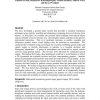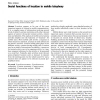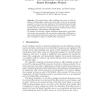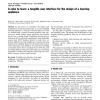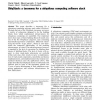PUC
2006
14 years 12 days ago
2006
PUC
2006
14 years 12 days ago
2006
We have developed a gesture input system that provides a common interaction technique across mobile, wearable and ubiquitous computing devices of diverse form factors. In this pap...
PUC
2006
14 years 12 days ago
2006
Location appears to be one of the most important aspects of context in mobile communication. It is a complex piece of information involving several levels of detail. Location inter...
PUC
2006
14 years 12 days ago
2006
Abstract. We envision future office buildings that partly or fully implement a flexible office organization where office rooms are dynamically assigned to currently present employe...
PUC
2006
14 years 12 days ago
2006
In this paper we introduce the design and development of the Learning Cube as a novel tangible learning appliance. Using the common shape of a cube we implemented a general learnin...
PUC
2006
14 years 12 days ago
2006
Abstract. The Stanford Event Heap has been shown to provide appropriate support for constructing interactive workspace applications. Given this success it is natural to consider th...
PUC
2006
14 years 12 days ago
2006
We discuss homes as potential settings for the products of appliance design. We catalog the large international and regional differences. We look at differences in terms of infrast...
PUC
2006
14 years 12 days ago
2006
Traditional remote controls typically allow users to activate functionality of a single device. Given that users activate a subset of functionality across devices to accomplish a p...
PUC
2006
14 years 12 days ago
2006
The characteristics of mobile environments, with the possibility of frequent disconnections and fluctuating bandwidth, have forced a rethink of traditional middleware. In particula...
PUC
2006
14 years 12 days ago
2006
This paper describes a taxonomy for a ubiquitous computing software stack called UbiqStack. Through the lens of the UbiqStack taxonomy we survey a variety of subsystems designed to...

